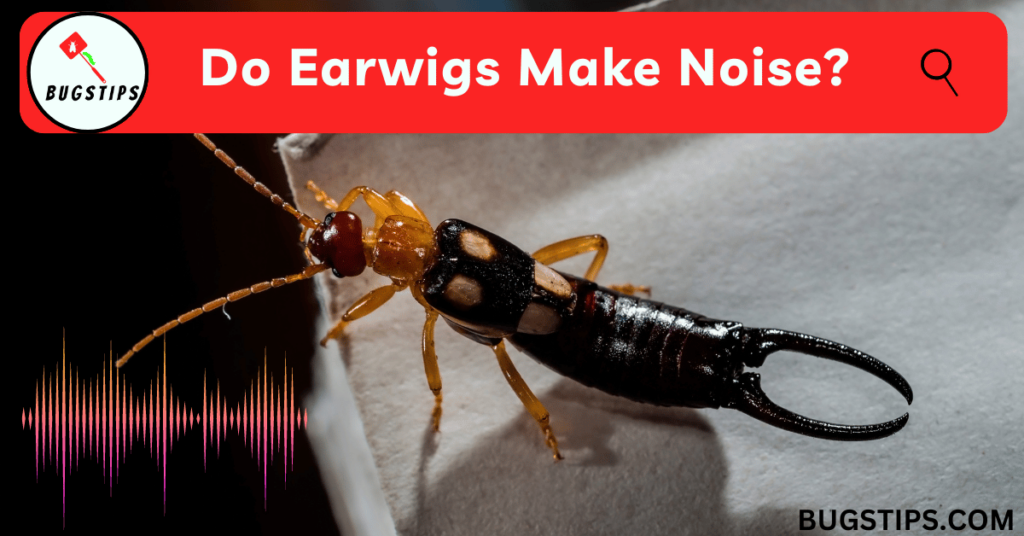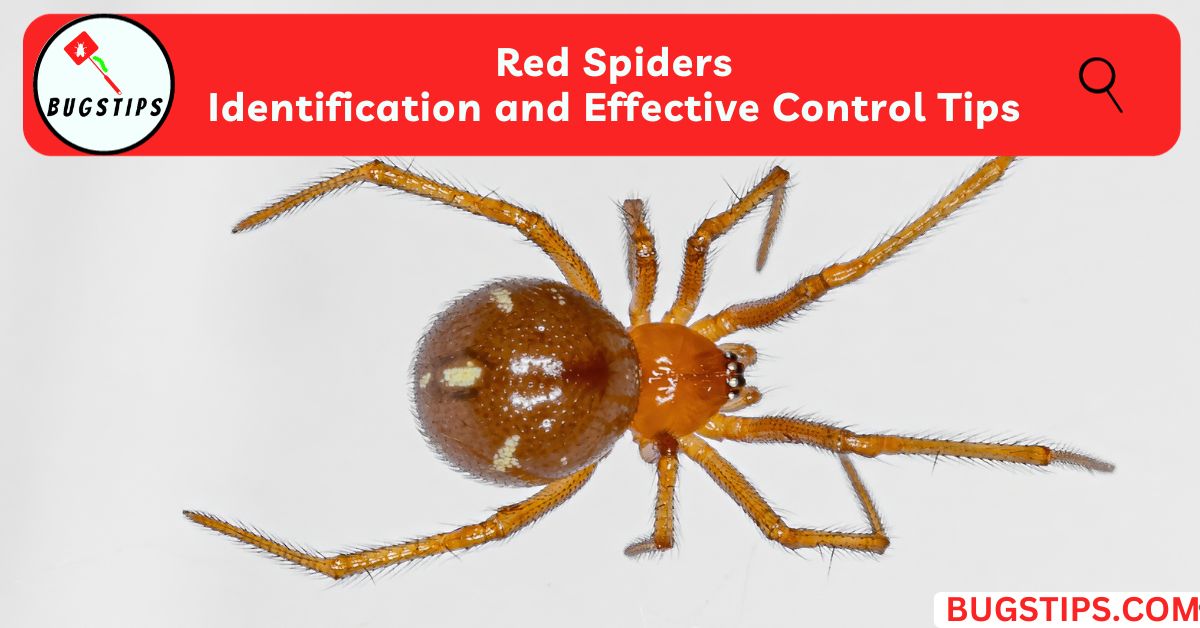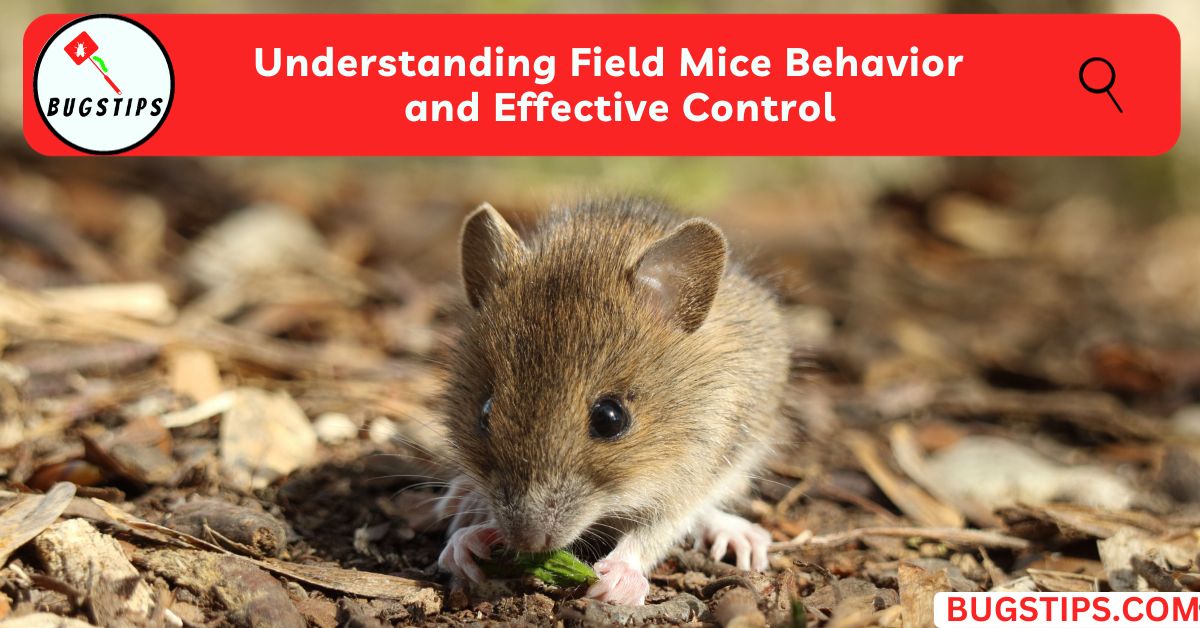This post may contain affiliate links which means as an Amazon Associate, this site may earn a small commission on qualified purchases made through links at no extra cost to you. Learn more on Affiliate Disclosure

Earwigs are small, winged insects that are commonly found in homes and gardens around the world. They are known for their pincers, which they use for defense and catching prey.
However, many people wonder if these insects make noise. In this article, we will explore the question “Do earwigs make noise?” and provide you with everything you need to know about earwigs and the sounds they produce.
Do Earwigs Make Noise? Understanding Earwig Noises
Yes, earwigs do make noise. They are known to produce sounds by rubbing their wings or bodies together.
These noises are often described as a faint clicking or crunching sound and are usually heard at night when earwigs are most active.
While these sounds may be unsettling, they are not harmful to humans and are a natural part of earwig behavior.
Understanding the sounds of earwigs can be important for identifying and controlling infestations, which we’ll discuss in more detail later in this article.
What Are Earwig Noises?
Earwig noises are sounds that earwigs produce as a result of their movements. Earwigs have wings, which they use to fly short distances, and they also have a pair of cerci, or pincers, on their abdomen.
When earwigs move or rub their wings or cerci together, they can produce a faint clicking or crunching sound.
These noises are often heard at night when earwigs are most active, and they are a natural part of earwig behavior. While earwig noises may be unsettling to some, they are not harmful to humans.
You’ll Also Like – Can an Earwig Kill You? The Truth About Earwig Harm and Myths
How Do Earwigs Produce Sounds?
Earwigs are known to produce sounds through a process called stridulation. This is the act of rubbing two body parts together to create sound.
In the case of earwigs, the wings and cerci, or pincers, on their abdomen are the body parts responsible for producing sound.
When earwigs rub their wings or cerci together, they create a vibration that produces a faint clicking or crunching sound. This sound is produced as the wings or cerci move across each other’s surface, creating friction that generates sound waves.
It’s important to note that not all earwigs produce sound, and not all earwig species produce the same types of sounds.
Some species of earwigs are silent and do not produce any sounds at all, while others may produce a variety of different sounds.
Overall, earwig sounds are a natural part of their behavior and are used for a variety of purposes, including communication with other earwigs and mating.
The Different Types of Noises Earwigs Make
As previously mentioned, earwigs produce sound through a process called stridulation. The sounds they produce can vary depending on the specific body parts they use to create the sound and the purpose of the sound.
One common type of sound produced by earwigs is a buzzing noise. This sound is often produced by male earwigs during mating season as a way to attract females.
The buzzing sound is created by the male earwig’s wings as they rub together in a fast and steady motion.
Another type of sound produced by earwigs is a clicking noise. This sound is often produced by both male and female earwigs as a warning signal to potential predators or as a form of communication between earwigs.
The clicking sound is produced by the cerci, or pincers, on the earwig’s abdomen as they rub together in a slower and more rhythmic motion.
some earwigs are also known to produce chirping sounds that are similar to the sounds made by crickets. This chirping noise is produced by the male earwig as a form of communication during mating season.
The male earwig will use his pincers to scrape against his abdomen, creating a high-pitched chirping sound that can attract females. While this chirping noise may be less common than the buzzing and clicking noises produced by earwigs
It's important to note that not all earwig species produce both buzzing and clicking sounds, and some may produce other types of sounds as well.
How Loud is The Noise That Earwigs Make
The noise produced by earwigs is generally not very loud. It’s typically quite soft and difficult to hear unless you’re near the insect.
The buzzing sound that earwigs make is usually around 60 decibels, which is roughly equivalent to the noise level of a normal conversation.
However, in certain situations, such as when there are large groups of earwigs together, the noise can become more noticeable.
Some species of earwigs may produce louder noises than others. While earwigs can produce sounds, they are not known for being particularly loud or disruptive pests.
The Role of Earwig Anatomy in Producing Noises
Earwigs have a unique anatomy that allows them to produce sounds. The most notable feature is their forceps, or pincers, which are located at the end of their abdomen. These forceps are used for a variety of purposes, including defense, mating, and handling food.
In addition to their forceps, earwigs have a special structure called a “file” and “scraper” on their wings.
These structures produce sounds when they rub against each other, much like a cricket’s wings. Earwigs also have a pair of membranous structures called “tympana” located on the sides of their abdomen, which function like ears and allow them to detect sounds.
The combination of these anatomical features allows earwigs to produce a range of noises, from the buzzing and clicking sounds made by their forceps to the chirping sounds produced by their wings.
The specific sounds produced by earwigs may vary depending on the species, but all earwigs are capable of making noise in some way.
Related Article – Can Earwigs Fly? Here are the 10 Surprising Truth
How Earwigs Communicate With Each Other
Earwigs are social insects that use different methods to communicate with each other. One of the most common ways they communicate is through the use of pheromones, which are chemical signals that can be used to attract mates, mark territories, or signal the presence of food sources.
Earwigs also use antennation, which is the touching of antennae, to communicate. This tactile form of communication allows earwigs to convey information about their environment, and potential threats, or even to initiate mating.
Earwigs also communicate through courtship behavior, including the use of their pincers. Male earwigs will use their pincers to grasp onto the female during courtship and to defend themselves against other males.
This behavior not only helps to signal their intention to mate but also to assert dominance over other males. s you can see earwig communication is a complex system that allows them to interact with their environment and other members of their species.
Do All Species of Earwigs Make Noise?
Not all species of earwigs make noise. Some species are completely silent. The ability to produce sound is not essential for all earwig species, as they use a variety of other communication methods to interact with each other.
However, for the species that do produce sound, it can serve as an important form of communication and may play a role in their courtship behavior or territorial disputes.
It’s also worth noting that even within the species that are known to produce sound, the frequency and intensity of their noises can vary. Some may produce a high-pitched buzzing sound, while others may make more of a clicking or chirping noise.
The specific sounds produced can also depend on the context, such as whether the earwig is in a state of agitation or is engaging in courtship behavior.
While the ability to make noise is not universal among earwigs, it remains an interesting aspect of their behavior and biology.
The Myth of Earwigs Making Noise
Even though earwigs are capable of producing noise, there is a common myth that they crawl into people’s ears and cause damage while making loud noises. This myth has been perpetuated for centuries and has led to fear and anxiety surrounding insects.
However, there is no scientific evidence to support this myth. Earwigs are not attracted to human ears and have no reason to crawl into them.
As explained before the noises that earwigs produce are generally not loud enough to be heard from a distance, let alone cause damage to human ears.
Therefore, the myth of earwigs making loud noises and crawling into human ears should be dismissed as nothing more than a persistent legend with no basis in reality.
Final Thoughts
While earwigs are known for their distinctive appearance and behavior, their reputation for making loud noises is largely a myth. While they are capable of producing some sounds, these are generally very quiet and not noticeable to humans.
Earwigs primarily use their pincers and pheromones to communicate with each other, and their anatomy plays a role in producing these signals.
Overall, understanding earwig noises is an interesting topic of study, but it’s important to separate fact from fiction and not believe all the myths about these fascinating insects.
FAQs
Do earwigs make noise at night?
Yes, earwigs are nocturnal creatures and are most active at night, which is when they are more likely to make noise.
Can earwig noises be harmful to humans?
No, earwig noises are not harmful to humans. They are usually too quiet to be heard by the human ear.
How can I tell if the noise I’m hearing is from an earwig or another insect?
Earwigs typically make a buzzing or clicking noise, which can be similar to the noises made by crickets or grasshoppers. However, earwigs tend to make these noises at a lower volume.
Is it possible for an earwig to make a loud noise?
No, earwigs are not capable of making very loud noises. Their noises are usually quiet and can be difficult to hear.
Do all species of earwigs make noise?
No, not all species of earwigs make noise. Some species are completely silent, while others may produce very low levels of noise.
How can I get rid of earwigs if their noises are bothering me?
The best way to get rid of earwigs is to eliminate their source of food and shelter. This can be done by removing any piles of debris or dead leaves from around your home, sealing any cracks or openings where they may enter, and using insecticide sprays or traps to kill any earwigs that are already present.
Resources – (for further reading)
New Hampshire PBS – Dermaptera – earwigs | Wildlife Journal Junior
Wikipedia – Earwig
UC ANR – Earwigs Management Guidelines – UC IPM
New World Encyclopedia – Earwig



